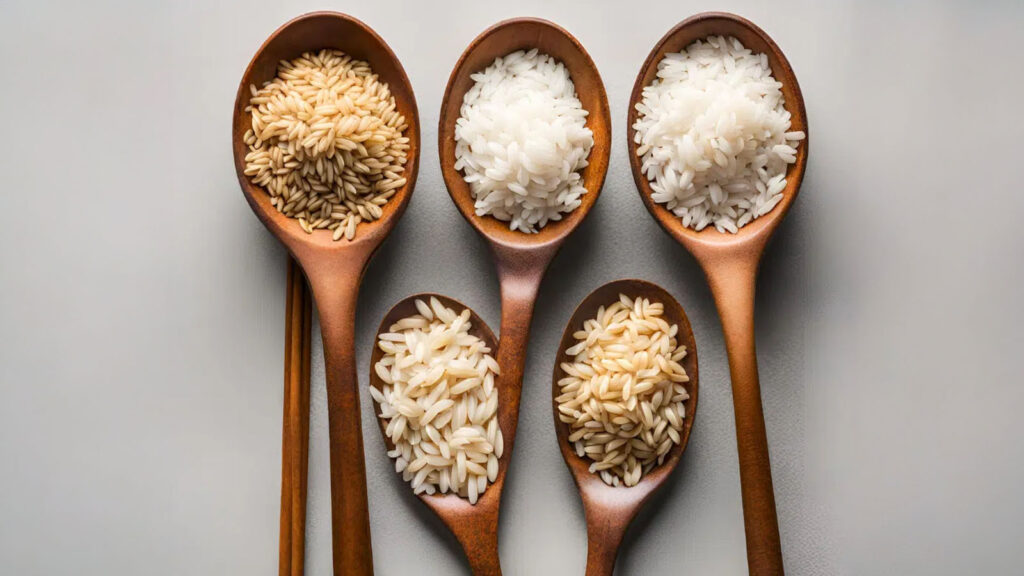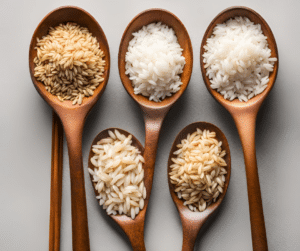
As a society, we’re all looking for the best options to stock our pantries for uncertain times. That’s why we’re here to explore the differences between long-term storage for brown and white rice. We’ll discuss the pros and cons, including nutrition, cooking, and storage. Whether you’re preparing for emergencies or simply want to be prepared, understanding these differences will help you make an informed choice. So let’s dive in and find out which rice is best for your long-term storage needs.

When it comes to comparing the shelf life of brown and white rice for long-term storage, we need to consider certain factors. The shelf life of rice can vary depending on the type and storage conditions. Brown rice generally has a shorter shelf life compared to white rice due to its higher oil content. It can go rancid after about 6 months, which can affect its taste and quality. White rice, on the other hand, has a longer shelf life and can be stored for several years if properly sealed and stored in a cool, dry place.
When it comes to cooking methods, brown rice requires a longer cooking time and more water compared to white rice. This is because brown rice retains the bran, which contains fiber, and takes longer to soften. On the other hand, white rice cooks faster and requires less water. Both types of rice can be cooked using various methods such as boiling, steaming, or using a rice cooker. It’s important to follow the recommended cooking instructions for each type of rice to ensure optimal results.
Rancidity concerns can impact the quality and taste of stored rice, whether it be brown or white. It is important to take steps for rancidity prevention in order to ensure the long-term preservation of brown and white rice. Rancidity occurs when the natural oils in rice break down and become spoiled. To prevent this, it is recommended to store rice in air and water-tight plastic buckets to minimize exposure to air and moisture. Additionally, using oxygen-absorbing packets or CO2 can help to prevent the growth of weevils, which can also contribute to rancidity. Another tip is to freeze rice for three weeks before storing to eliminate the need for oxygen absorbers or CO2. Proper storage techniques are crucial in maintaining the quality and longevity of stored rice.

In terms of nutritional content, both brown and white rice have their own distinct advantages and disadvantages. Brown rice, with its bran intact, retains more fiber compared to white rice. This fiber provides numerous benefits, such as promoting healthy digestion and reducing the risk of heart disease. Additionally, brown rice contains higher amounts of iron, vitamin B3, B1, and B6, making it a more nutrient-dense option. On the other hand, white rice lacks these essential nutrients and is mostly sprayed with man-made vitamins and minerals. It is important to note that brown rice has a lower impact on blood sugar levels due to its higher fiber content, making it a healthier choice for individuals with diabetes or those aiming to maintain steady blood sugar levels.
Making a gradual transition from white rice to brown rice can help alleviate stomach discomfort. When transitioning from white rice to brown rice, it is important to consider the following factors:
1. Transition Discomfort
– Start by incorporating small amounts of brown rice into your meals and gradually increase the proportion over time.
– This gradual approach allows your body to adjust to the higher fiber content of brown rice, reducing the likelihood of stomach discomfort.
2. Storage Methods
– Proper storage of both brown and white rice is essential for maintaining their quality and longevity.
– Store rice in air and water-tight plastic buckets to protect it from moisture and pests.
– Consider using oxygen-absorbing packets or CO2 to prevent weevils and maintain freshness.
– Freezing rice for three weeks can eliminate the need for oxygen absorbers or CO2, ensuring long-term storage without compromising quality.
When we compare brown and white rice, the nutrient content is an important factor to consider. The impact of processing on the nutritional value of rice is significant. Brown rice retains its bran, which is rich in fiber, iron, vitamin B3, B1, and B6. On the other hand, white rice undergoes a more extensive processing method, where the bran and germ are removed, resulting in a loss of these essential nutrients. Vitamins and minerals are then artificially added to white rice. Therefore, when it comes to nutritional value comparison, brown rice is the clear winner. It provides higher nutritional value and is less processed than white rice. So, if you want to ensure you’re getting the most nutrients from your rice, opt for brown rice.
Our main concern is ensuring the longevity of our rice, so we need to understand the storage requirements for both brown rice and white rice. When it comes to rice storage methods, proper handling is crucial in preventing rice spoilage. Here are some tips to keep in mind:
– For long-term storage, store rice in air and water-tight plastic buckets to protect it from moisture and pests.
– Use oxygen-absorbing packets or CO2 to prevent weevils from infesting the rice.
– Alternatively, freezing rice for three weeks can eliminate the need for oxygen absorbers or CO2.
– Proper storage not only helps maintain rice quality but also extends its shelf life. By following these rice storage methods, we can ensure that our rice stays fresh and delicious for an extended period. Remember, if you have any additional questions or need further information, feel free to ask in the comments section.
We prefer using white rice for its shorter cooking time and less water usage compared to brown rice. When it comes to reduced cooking time, white rice is a great option for those who desire quick and convenient meals. With its shorter cooking time, you can have a delicious bowl of fluffy white rice on your plate in no time. Additionally, white rice requires less water compared to brown rice, making it a more water-conserving choice. This is especially important for individuals who prioritize water conservation in their daily lives. So, if you’re looking for a rice option that saves you time and helps conserve water, white rice is the way to go.
But, if you’re looking for a rice option that is convenient and versatile, white rice is the way to go. Here’s why:
Cooking Methods:
– White rice can be easily cooked using various methods such as boiling, steaming, or even using a rice cooker. This makes it a hassle-free option for busy individuals or those who prefer quick meals.
– It absorbs flavors well, allowing you to add different seasonings or sauces to enhance its taste according to your preferences.
Taste Preferences:
– White rice has a milder and more neutral taste compared to brown rice. This makes it a great accompaniment to a wide range of dishes, as it doesn’t overpower the flavors of other ingredients.
– Its softer texture appeals to those who enjoy a smoother and less chewy rice experience.

When it comes to long-term storage of rice, one of the most important factors to consider is proper packaging. Ensuring that your rice is stored in air and water-tight plastic buckets can help maintain its quality and longevity. Additionally, using oxygen absorbers or CO2 can prevent weevils from infesting your rice. However, there is another technique that can eliminate the need for oxygen absorbers or CO2 – freezing. Freezing rice for three weeks can effectively kill any insects or eggs present, ensuring that your rice remains pest-free during storage. This technique is particularly useful if you don’t have access to oxygen absorbers or CO2. By properly packaging and employing the freezing technique, you can ensure that your rice stays fresh and delicious for an extended period of time.
Save

Kitchen Kneads is your one-stop shop for quality grains, flour, kitchen appliances, and other ingredients.
We are Utah’s premier baking and cooking resource!
Questions?


Kitchen Kneads is your one stop shop for quality grains, flour, kitchen appliances and other ingredients. We are Utah’s premiere baking and cooking resource! Questions?
888-881-9957
info@kitchenkneads.com
2022 | Kitchen Kneads | All Rights Reserved | Privacy Policy | Terms | XML Sitemap | Site by PDM